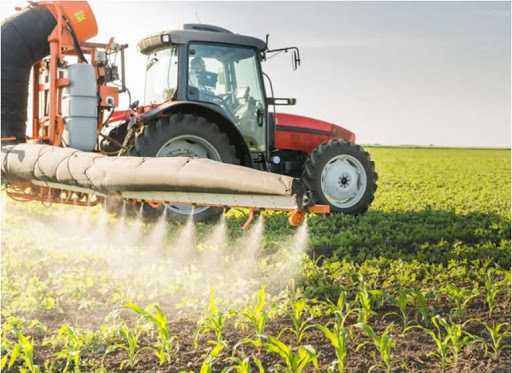As one gazes across the rows of brightly colored fruits and vegetables in the produce section of the grocery store, one may not be aware that the quantity of nutrients in these crops has been declining over the past 70 years.
Mounting evidence from multiple scientific studies shows that many fruits, vegetables, and grains are grown today carry less protein, calcium, phosphorus, iron, riboflavin, and vitamin C than those that were grown decades ago. This is an especially salient issue if more people switch to primarily plant-based diets, as experts are increasingly recommending for public health and for protecting the planet.
Nutrient decline “is going to leave our bodies with fewer of the components they need to mount defenses against chronic diseases—it’s going to undercut the value of food as preventive medicine,” says David R. Montgomery, a professor of geomorphology at the University of Washington in Seattle and co-author with Anne Biklé of What Your Food Ate.
Even for people who avoid processed foods and prioritize fresh produce, this trend means that “what our grandparents ate was healthier than what we’re eating today,” says Kristie Ebi, an expert in climate change and health at the University of Washington in Seattle.
Scientists say that the root of the problem lies in modern agricultural processes that increase crop yields but disturb soil health. These include irrigation, fertilization, and harvesting methods that also disrupt essential interactions between plants and soil fungi, which reduces the absorption of nutrients from the soil. These issues are occurring against the backdrop of climate change and rising levels of carbon dioxide, which are also lowering the nutrient contents of fruits, vegetables, and grains.
Experts say it’s important to keep these declines in perspective and not let this news deter you from eating a variety of fruits, vegetables, and whole grains to maintain your health. But they hope the results will spur more people to care about how their food is being grown.
“Most people know that what we eat matters—if how our food is raised also matters, it opens a new, compelling reason for the average person to care about agricultural practices,” says Montgomery. “We can’t afford to lose arable land as population grows. We need to prevent further damage and work to restore fertility to already degraded lands.”
The point of diminishing returns.
One of the largest scientific studies to draw attention to this issue was published in the December 2004 issue of the Journal of the American College of Nutrition. Using USDA nutrient data published in 1950 and 1999, researchers at the University of Texas at Austin noted changes in 13 nutrients in 43 different garden crops—from asparagus and snap beans to strawberries and watermelon.
These raw fruits and veggies showed declines in protein, calcium, and phosphorus, which are essential for building and maintaining strong bones and teeth and for proper nerve function. There were also dips in iron, vital for carrying oxygen throughout the body, and in riboflavin, which is crucial for the metabolism of fats and drugs. Levels of vitamin C—important for the growth and repair of various tissues in the body and for immune function—also fell.
The level of decline varied depending on the specific nutrients and the type of fruit or vegetable, but it generally ranged from 6 percent for protein to 38 percent for riboflavin. In particular, calcium dropped most dramatically in broccoli, kale, and mustard greens, while the iron content took a substantial hit in chard, cucumbers, and turnip greens. Asparagus, collards, mustard greens, and turnip greens lost considerable amounts of vitamin C.
Further studies since then have backed up the case that nutrient levels are dissipating. Research in the January 2022 issue of the journal Foods found that while most vegetables grown in Australia had relatively similar iron content between 1980 and 2010, there were noteworthy drops in certain veggies. Declines in iron content, ranging from 30 to 50 percent, occurred for sweet corn, red-skinned potatoes, cauliflower, green beans, green peas, and chickpeas. By contrast, Hass avocadoes, mushrooms, and silverbeet (another name for chard) actually gained in iron.
Grains have also experienced declines, experts say. A study in a 2020 issue of Scientific Reports found that protein content in wheat decreased by 23 percent from 1955 to 2016, and there were notable reductions in manganese, iron, zinc, and magnesium, as well.
The alarming declines have ripple effects for meat-eaters too. Cows, pigs, goats, and lambs are now feasting on less nutritious grasses and grains, Montgomery says, which in turn makes meat and other animal-derived products less nutritious than they used to be.
“By learning to grow plants bigger and faster, the plants aren’t able to keep up with absorption of the nutrients from the soil or able to synthesize nutrients internally,” explains Donald R. Davis of the University of Texas at Austin. The retired chemist and nutrition researcher was the lead author of the eye-opening 2004 study, as well as an author of subsequent papers on this subject.
Higher yield means nutrients from the soil must be distributed across a greater volume of crops, so in effect, the nutrients these fruits and veggies produce are diluted. “Unfortunately, farmers get paid for the weight of their crops, so that incentivizes them to do things that aren’t good for the nutrient content,” Davis adds.
Another culprit is the soil damage that results from high-yield crops. Wheat, corn, rice, soybeans, potatoes, bananas, yams, and flax all benefit from partnerships with key fungi that enhance the plants’ ability to access nutrients and water from the soil. The “fungi act as root extensions for the plant,” Montgomery says. But high-yield farming depletes the soil, which to some extent compromises the ability of plants to form partnerships with mycorrhizal fungi, explains Montgomery.
Rising carbon dioxide levels in the atmosphere are also undercutting the nutritiousness of our foods.
All plants have photosynthetic pathways through which they bring in carbon dioxide from the atmosphere, break it apart, and use the carbon to grow, explains Ebi. But when crops including wheat, rice, barley, and potatoes are exposed to higher levels of carbon dioxide, they generate more carbon-based compounds, which leads to higher carbohydrate content. In addition, when concentrations of carbon dioxide are higher, these crops draw in less water, “which means they bring in fewer micronutrients from the soil,” says Ebi.
Experiments described in a 2018 issue of Science Advances confirmed that concentrations of protein, iron, zinc and several B vitamins decreased in 18 types of rice after exposure to higher levels of carbon dioxide.
A looming threat to public health.
To be clear: Fruits, vegetables, and whole grains are still among the healthiest foods on the planet—but consumers may not be getting the nutrients they’re counting on from plant-based foods. And if these nutrient declines continue, some people may be at elevated risk for developing deficiencies in certain nutrients or less able to protect themselves from chronic diseases through good nutrition, experts say.
While these nutrient declines affect everyone, some people are more likely to suffer harm.
“Wheat and rice compose more than 30 percent of calories consumed around the world,” Ebi notes. “Anyone whose diet relies heavily on these grains, particularly low-income populations, could be affected by decreasing consumption of protein, B vitamins, and micronutrients [in these grains]. These dietary changes could lead to deficiencies, such as iron-deficiency anemia in women and girls.”
Nutrient declines are a huge concern in countries that are already struggling with severe food insecurity, adds Chase Sova, senior director of public policy and research at World Food Program USA.
“As many as three billion people around the planet, most of them in low- and middle-income countries, cannot regularly afford a healthy diet, and at least two billion are suffering from so-called hidden hunger, missing key micronutrients in their diets,” Sova says. “These people cannot afford additional nutrient declines in plant-based foods.”
No matter who is eating them, foods with fewer nutrients also may be lacking another important attribute: flavor. A lot of the health-protective compounds also impart flavor to foods, so some of the shifts in farming practices that are responsible for lower nutrient levels are the same ones that contribute to their meh tastes (we’re talking about you, tasteless tomatoes and bland carrots).








